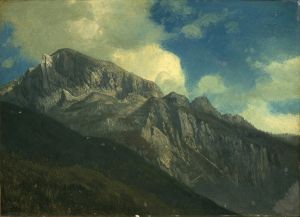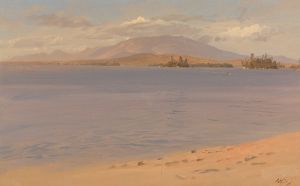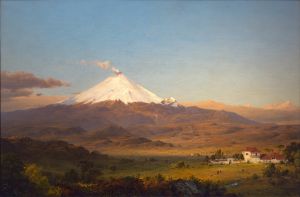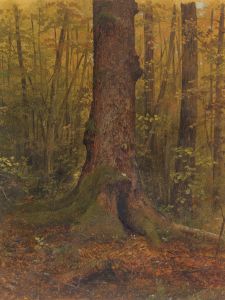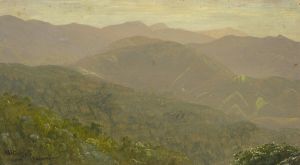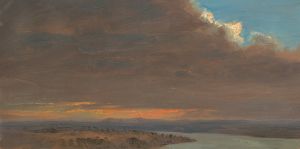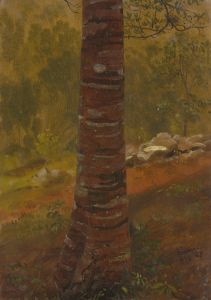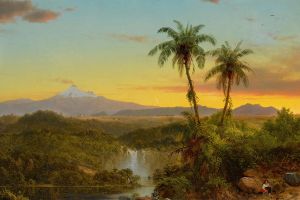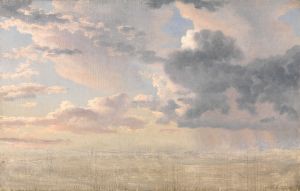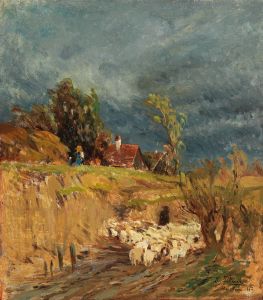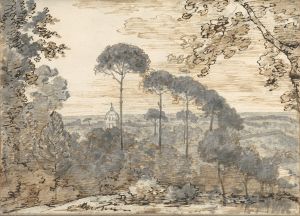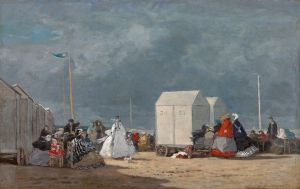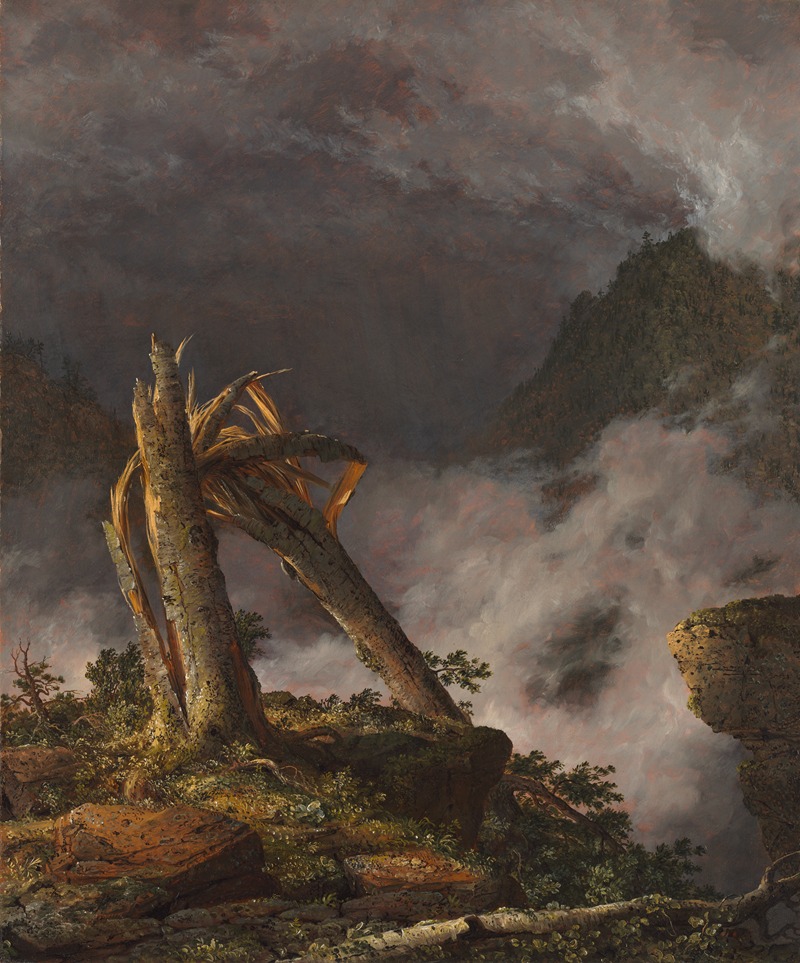
Storm in the Mountains
A hand-painted replica of Frederic Edwin Church’s masterpiece Storm in the Mountains, meticulously crafted by professional artists to capture the true essence of the original. Each piece is created with museum-quality canvas and rare mineral pigments, carefully painted by experienced artists with delicate brushstrokes and rich, layered colors to perfectly recreate the texture of the original artwork. Unlike machine-printed reproductions, this hand-painted version brings the painting to life, infused with the artist’s emotions and skill in every stroke. Whether for personal collection or home decoration, it instantly elevates the artistic atmosphere of any space.
"Storm in the Mountains" is a painting by the renowned American landscape artist Frederic Edwin Church, who was a central figure in the Hudson River School, a mid-19th century American art movement known for its realistic and detailed portrayals of nature. Church, born in 1826, was a student of Thomas Cole, the founder of the Hudson River School, and he became one of the most celebrated landscape painters of his time.
Frederic Edwin Church is best known for his large-scale, dramatic landscapes that often depict sublime and awe-inspiring scenes. His works frequently feature grand natural phenomena, such as sunsets, storms, and mountains, capturing the vastness and beauty of the American wilderness. Church's paintings are characterized by their meticulous attention to detail, vibrant colors, and the ability to convey the majesty of nature.
"Storm in the Mountains" exemplifies Church's skill in portraying dramatic natural events. Although specific details about the creation and exhibition history of this particular painting are limited, it is consistent with Church's broader oeuvre, which often explored themes of nature's power and beauty. His works typically reflect a deep appreciation for the natural world, influenced by the Romantic movement's emphasis on emotion and the sublime.
Church's landscapes were not only artistic achievements but also reflections of the 19th-century American spirit of exploration and discovery. During this period, there was a growing interest in the American wilderness, partly fueled by the expansion westward and the belief in Manifest Destiny. Church's paintings, including "Storm in the Mountains," resonated with audiences who were captivated by the untamed beauty of the American landscape.
In his lifetime, Church traveled extensively, seeking inspiration from various landscapes around the world. His journeys took him to South America, the Arctic, Europe, and the Middle East, and these experiences enriched his artistic vision. While "Storm in the Mountains" is likely inspired by his observations of natural phenomena, it is important to note that Church often combined elements from different locations to create idealized and imaginative landscapes.
Church's work was highly acclaimed during his lifetime, and he enjoyed considerable success and recognition. His paintings were exhibited widely, and he became one of the most financially successful American artists of his era. Today, Church's works are held in major art collections, including the Metropolitan Museum of Art in New York and the National Gallery of Art in Washington, D.C.
"Storm in the Mountains" continues to be appreciated for its artistic merit and its ability to evoke the power and beauty of nature. Church's legacy as a master landscape painter endures, and his works remain influential in the history of American art. His ability to capture the essence of the natural world with such precision and emotion ensures that his paintings, including "Storm in the Mountains," continue to captivate audiences and inspire future generations of artists.





